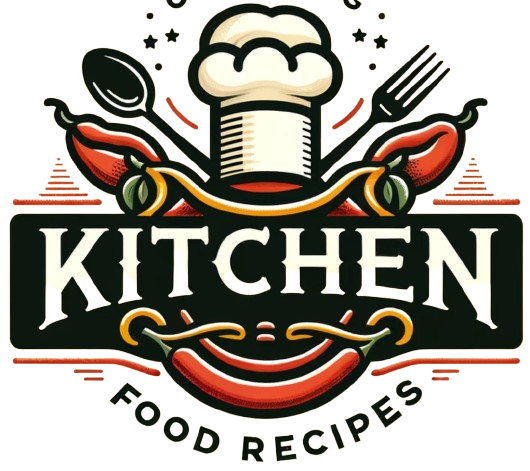 Serve the Chakli as a snack with tea or coffee.
Serve the Chakli as a snack with tea or coffee.
Cultural Significance of Chakli :
Chakli, a spiral-shaped savory snack, is deeply ingrained in the culinary traditions of India, particularly popular in Maharashtra, Karnataka, and Gujarat. Known for its crispy texture and distinctive flavor, Chakli holds a special place in Indian culture.
 Festival Staple: Chakli is an integral part of the Diwali festival. This auspicious occasion sees homes across India preparing Chakli as part of the celebratory fare, symbolizing joy and festivity.
Festival Staple: Chakli is an integral part of the Diwali festival. This auspicious occasion sees homes across India preparing Chakli as part of the celebratory fare, symbolizing joy and festivity.
 Symbol of Unity and Celebration: Making Chakli is often a communal activity, involving family members in the process, thus fostering a sense of togetherness and tradition.
Symbol of Unity and Celebration: Making Chakli is often a communal activity, involving family members in the process, thus fostering a sense of togetherness and tradition.
 Culinary Diversity: Different regions of India have their own versions of Chakli, using varied ingredients and techniques, showcasing the diversity of Indian culinary practices.
Culinary Diversity: Different regions of India have their own versions of Chakli, using varied ingredients and techniques, showcasing the diversity of Indian culinary practices.
 Snack Culture: Beyond festivals, Chakli is a popular snack enjoyed year-round, often accompanying evening tea or served as a snack to guests, reflecting the Indian hospitality.
Snack Culture: Beyond festivals, Chakli is a popular snack enjoyed year-round, often accompanying evening tea or served as a snack to guests, reflecting the Indian hospitality.
Health Benefits of Chakli :
 Source of Energy: Made primarily from rice flour and/or other flours like besan (gram flour), Chakli is a good source of carbohydrates, providing instant energy.
Source of Energy: Made primarily from rice flour and/or other flours like besan (gram flour), Chakli is a good source of carbohydrates, providing instant energy.
 Protein Content: When made with gram flour or lentil flours, Chakli offers a fair amount of protein, essential for muscle building and repair.
Protein Content: When made with gram flour or lentil flours, Chakli offers a fair amount of protein, essential for muscle building and repair.
 Contains Healthy Fats: If made with ingredients like sesame seeds or roasted with healthier oils, Chakli can provide beneficial fats.
Contains Healthy Fats: If made with ingredients like sesame seeds or roasted with healthier oils, Chakli can provide beneficial fats.
 Gluten-Free Option: Chakli made with rice flour and gram flour is a gluten-free option for those with gluten sensitivities.
Gluten-Free Option: Chakli made with rice flour and gram flour is a gluten-free option for those with gluten sensitivities.
Advantages of Eating Chakli :
 Source of Energy: Chakli is primarily made from flours like rice flour and gram flour, which are good sources of carbohydrates, providing a quick burst of energy.
Source of Energy: Chakli is primarily made from flours like rice flour and gram flour, which are good sources of carbohydrates, providing a quick burst of energy.
 Protein Content: When gram flour (besan) or lentil flours are used, Chakli can be a source of plant-based protein.
Protein Content: When gram flour (besan) or lentil flours are used, Chakli can be a source of plant-based protein.
 Gluten-Free Option: Many Chakli recipes, especially those made with rice flour and gram flour, are gluten-free, making them suitable for people with gluten intolerance or celiac disease.
Gluten-Free Option: Many Chakli recipes, especially those made with rice flour and gram flour, are gluten-free, making them suitable for people with gluten intolerance or celiac disease.
 Contains Sesame Seeds: Some Chakli recipes include sesame seeds, which are a good source of healthy fats, calcium, and other minerals.
Contains Sesame Seeds: Some Chakli recipes include sesame seeds, which are a good source of healthy fats, calcium, and other minerals.
 Culinary Diversity: Chakli allows for variations in ingredients and flavors, making it adaptable to different dietary needs and preferences.
Culinary Diversity: Chakli allows for variations in ingredients and flavors, making it adaptable to different dietary needs and preferences.
Disadvantages of Eating Chakli :
 High in Calories: Chakli is typically deep-fried, making it high in calories and potentially contributing to weight gain if consumed in large quantities.
High in Calories: Chakli is typically deep-fried, making it high in calories and potentially contributing to weight gain if consumed in large quantities.
 Contains Saturated Fats: Depending on the type of oil used for frying, Chakli can be high in saturated fats, which may have implications for heart health.
Contains Saturated Fats: Depending on the type of oil used for frying, Chakli can be high in saturated fats, which may have implications for heart health.
 Risk of Overeating: Due to its delicious taste and small size, it can be easy to overeat Chakli, leading to excessive calorie consumption.
Risk of Overeating: Due to its delicious taste and small size, it can be easy to overeat Chakli, leading to excessive calorie consumption.
 Digestive Issues for Some: The combination of flours and spices may not be easy to digest for everyone, potentially causing bloating or discomfort, especially in those with sensitive stomachs.
Digestive Issues for Some: The combination of flours and spices may not be easy to digest for everyone, potentially causing bloating or discomfort, especially in those with sensitive stomachs.
 Salt Content: Chakli can be high in salt, which might be a concern for individuals monitoring their sodium intake, such as those with high blood pressure.
Salt Content: Chakli can be high in salt, which might be a concern for individuals monitoring their sodium intake, such as those with high blood pressure.
 KitchenFoodRecipes
KitchenFoodRecipes

 09-01-2024
09-01-2024
 www.kitchenfoodrecipes.com
www.kitchenfoodrecipes.com